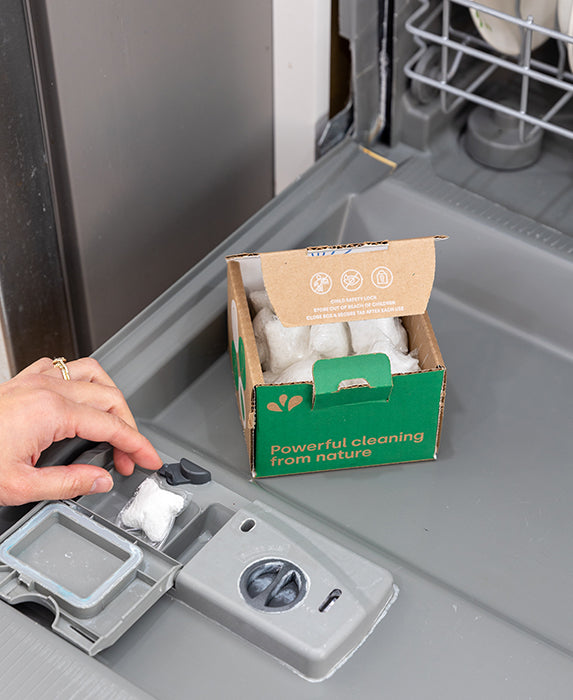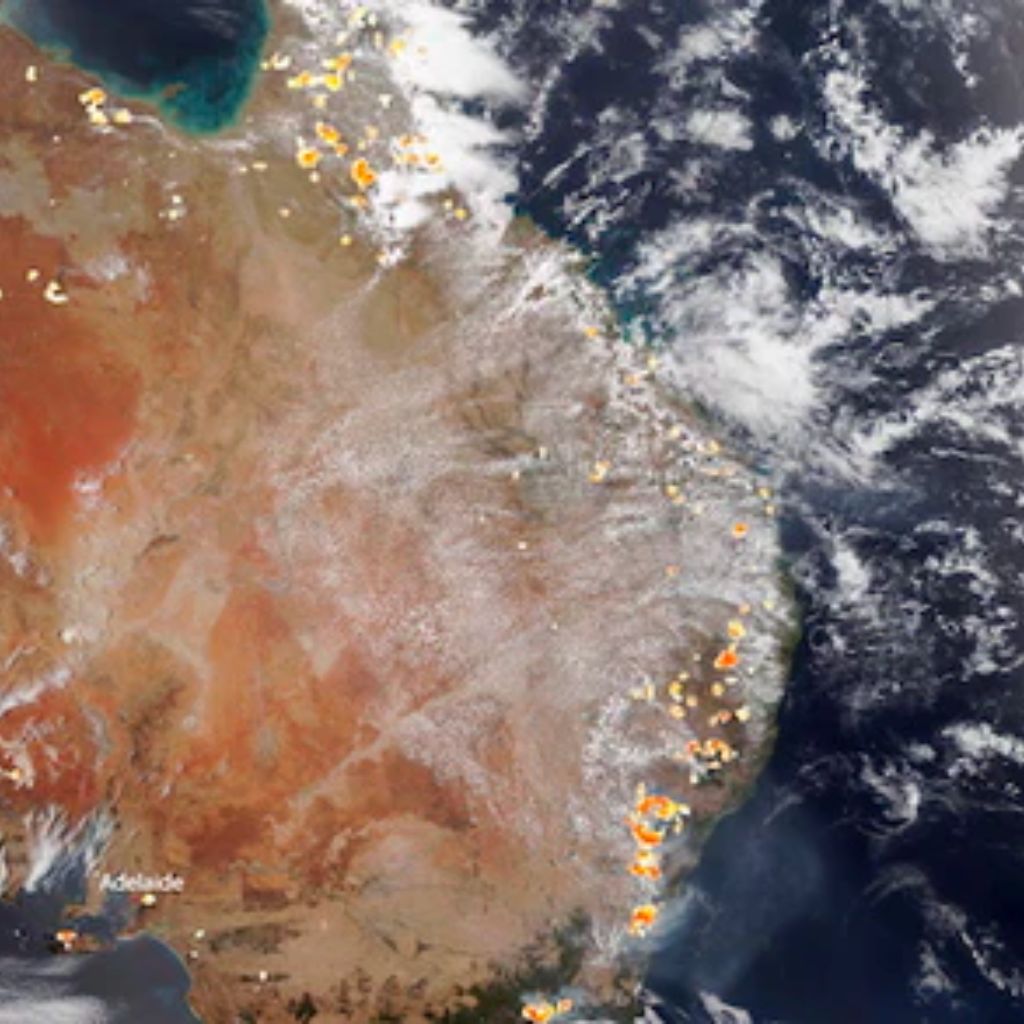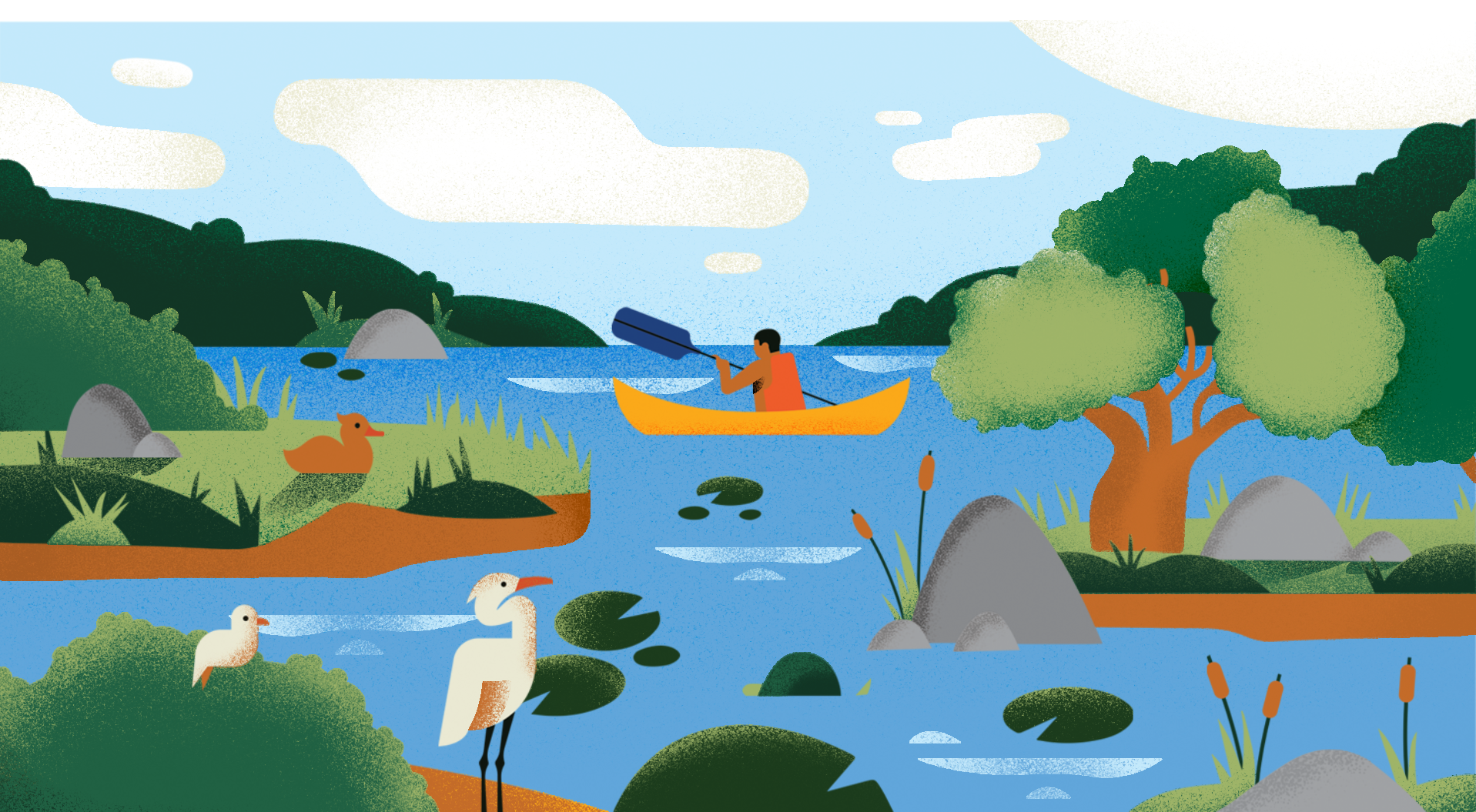The Details
Although Australia usually experiences bushfires seasonally in the summer months, in the last 6 months they have been seeing unprecedented fires– killing at least 28 people nationwide and destroying over 3,000 homes. The fires are raging in every Australian state, but have hit New South Wales the hardest. According to the Associated Press, over 12 million acres have burned, an area the size of Vermont and New Hampshire combined.
But bushland and wooded areas aren’t the only places feeling the impacts. Cities like Melbourne and Sydney, especially the suburbs, have been experiencing thick smoke plumes and hazardous air quality. In fact, studies back in December indicated that the air quality in Sydney was 11x above “hazardous levels”.
Beyond the impacts to humans and land, the fires are posing huge threats to animals and their habitats– specifically animals like koalas and certain species of frogs and birds that are already endangered. Professor Christopher Dickman of the University of Sydney has estimated that over 800 million animals may have already perished in the fires. Federal Environment Minister Sussan Ley has said that over a third of koalas in NSW have been killed, and a third of their habitat has been destroyed. While there’s no way to truly know the damage, it’s clear that this fire is endangering the diversity of Australian wildlife.
Global Impact
Although the fires are contained to Australia, the impacts will be global. NASA has stated that the smoke from the fires are expected to make at least one “full circle” around the globe before returning to Australian skies. South America has already experienced hazy skies, and other countries will soon be impacted. Glaciers, and snow, in New Zealand have been darkened or turned brown, and the country has been seeing worsened air conditions as well.
The Role of Climate Change
The hot, dry weather and high winds make Australian wildfires a frequent ocurrance in the Summer– with natural causes like lightning strikes in drought-affected forests sometimes being the culprit. But the increasing intensity and length of these fires are pointing towards another major factor: climate change.

Rising global temperatures, desertification of lands, and extreme heat waves are all occurring more frequently as impacts of global climate change. In addition, Australia is experiencing one of its worst droughts in decades, and a heatwave in December 2019 broke the record for highest nationwide average temperature. Climate change, caused by a myriad of global factors, is without a doubt playing a huge role– and it is up to us to take action now to fight the causes, and symptoms, of it. It is possible that these fires will continue to occur year after year if things don’t change.
What is being done?

These Australian wildfires have been burning for several months, and state and federal authorities have been trying to fight them for just as long. States like Victoria and NSW have declared a state of disaster and emergency respectively, giving the government increased ability to provide aid.
In NSW alone, there are over 2,000 firefighters on the ground, and billions of dollars of federal aid has been allocated to disaster relief. Despite the huge efforts in Australia, and from other countries, the fires don’t seem to be stopping soon– and they are only halfway through their summer.
What can I do to help?
Many non-profits, companies, and state and federal agencies are springing into action to help all aspects of the fire, from aiding firefighters, to saving and rehabilitating animals, and victim relief and recovery. Groups like the Australian Red Cross and NSW Rural Fire Service are focused on victim recovery– and are accepting donations to help fund their efforts. Other groups like the Port Macquarie Koala Hospital and IFAW are more focused on animals, rescuing wildlife injured in the fires.

IFAW, standing for the International Fund for Animal Welfare, has been rescuing wildlife and advocating for animals for over 50 years. With projects in over 40 countries, they rescue individual animals, work to prevent animal cruelty, and campaign for the protection of wildlife and habitats. Their Global Disaster Response team is currently in Australia rehabilitating wildlife by providing feeding stations, donating veterinary supplies and medicines, leading off-road search and rescue missions, and supporting wildlife rehab facilities.
It’s not time to lose hope. When rain does come, the bushland could recover quickly, with trees using the bed of ash for nutrients to regrow. A professor from Flinders University in Adelaide is hopeful, stating “We are constantly surprised how recovery happens quickly after a fire and how many animals survive.”









